When Budapest was created in 1873, it consisted of 10 districts. What is today Zugló was divided between two districts at the time, the 6th and 7th. In the 1890s the eastern edge of the 8th District, Rákosfalva, was attached to the 10th District.
The decision to form Zuglo was reached in 1930, and it began operating as an independent administrative unit on 1 October 1935. Known as Rákosváros at the time, the area had 67,000 inhabitants and covered 18.74 square km.
The 14th districts consists of eight areas: Városliget, Herminamező, Nagy-Zugló, Kis-Zugló, Alsórákos, Törökőr, Istvánmező and Rákosfalva. It population moved into the area gradually through the 19th and 20th centuries.
 The Mayor's Office in Zugló (Photo: Zuglo.hu)
The Mayor's Office in Zugló (Photo: Zuglo.hu)
Zugló is divided into its sub-units by several major Budapest or national roads. The main road in the district is Thököly Road, and the most valuable elements of its architectural heritage can be found in Városligeti and the surrounding areas: Herminamező and Istvánmező. Among these the internationally acclaimed buildings designed by Józseg Hild, Ödön Lechner and Béla Lajta are the most well-known. The majority of imposing building can be found on Stefánia Road and Hermina Road.
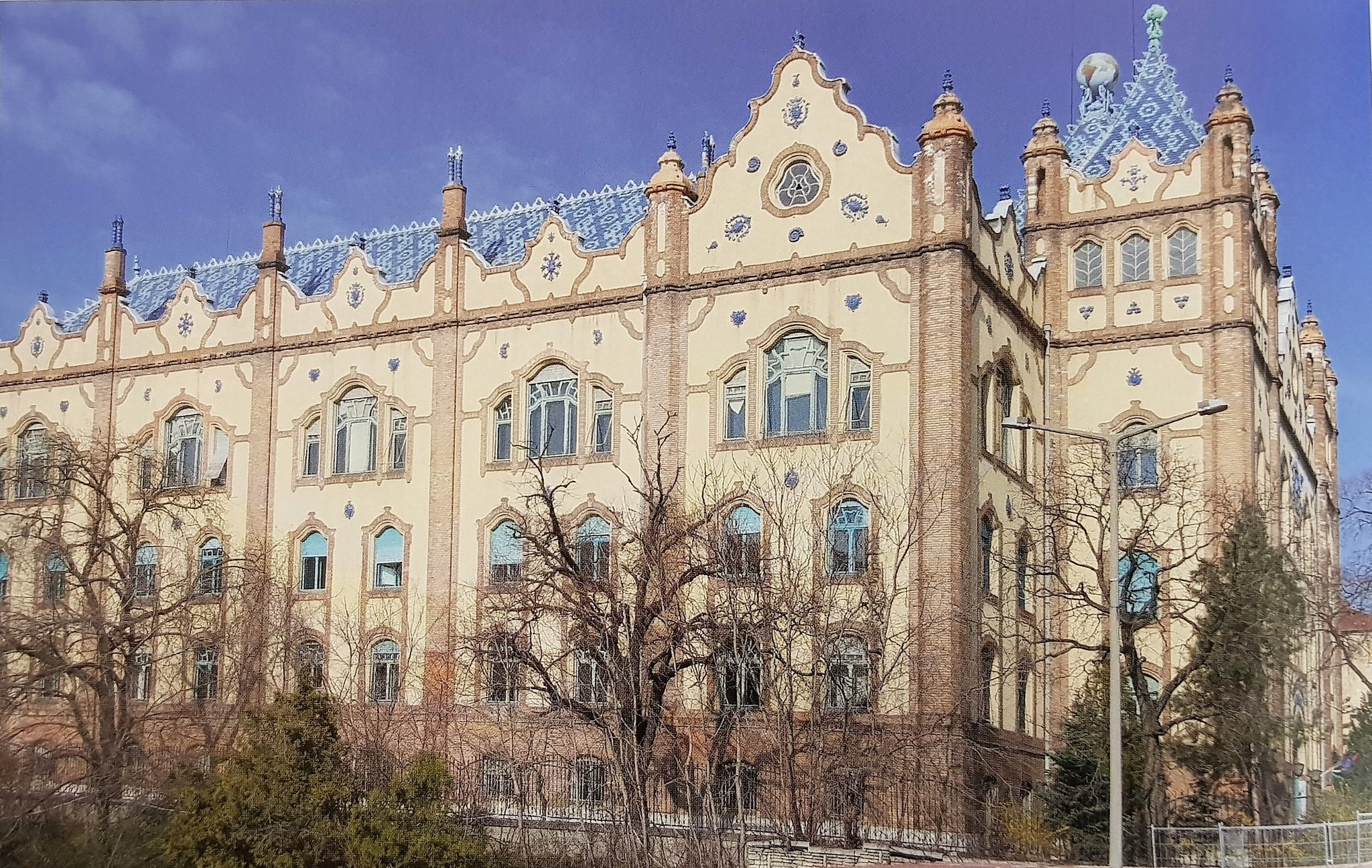 The Hungarian Royal Geological Institute (14 Stefania Road, Budapest, 14th District) built 1896–1899 (Photo: Lechner összes [Lechner: The complete works]/Látóhatár Kiadó)
The Hungarian Royal Geological Institute (14 Stefania Road, Budapest, 14th District) built 1896–1899 (Photo: Lechner összes [Lechner: The complete works]/Látóhatár Kiadó)
Many houses in Zugló are under national, city-level or local protection, and Heroes Square, the Museum of Fine Arts and the Hall of Arts are a World Heritage Site.
 The Hall of Arts on Heroes Square (Photo: Balázs Both/pestbuda.hu)
The Hall of Arts on Heroes Square (Photo: Balázs Both/pestbuda.hu)
Healthcare in the district had a 150-year history. The earliest hospital in the area, the Bethesda Hospital opened in 1872 in the Barlt Villa built next to City Park during the National Awakening.
.jpg)
Bethesda Hospital (Magyar Filmiroda)
Zugló is also often called the district of schools because of the many famous educational institutions within its borders. The most important grammar schools are those named after Saint Stephen and Miklós Radnóti. Higher education institutions include the Evangelical University of Theology, the Budapest College of Communication, now the Budapest Metropolitan University, and the Miklós Ybl Faculty of Szent István University.
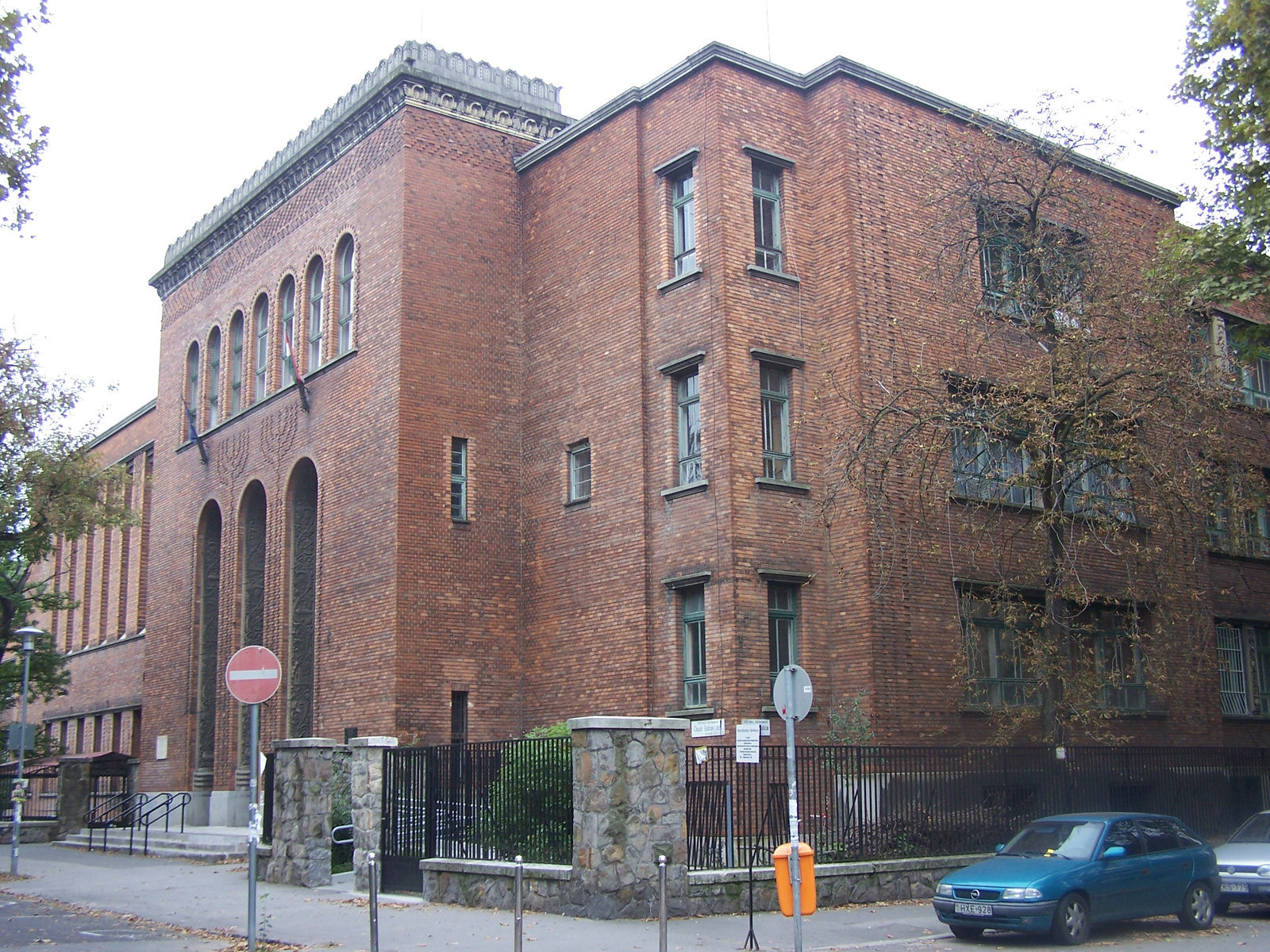
ELTE Radnóti Miklós Primary School and Secondary School for Teacher Training (Photo: Wikipedia)
These schools are not only famous for the quality of the education they provide but for the architectural and artistic values preserved in their buildings. The Assembly hall of the School of the Vision Impaired, the Nádor Hall is especially of note in this regard, especially the monumental glass structure created by Imre Zsellér in the 1930s.

The Art Nouveau painted glass window in the Nádor Hall (Photo: Julia Kozics/pestbuda.hu)
Public transport in the district is environmentally friendly even to Western European standards, as the Millennium Underground railway, trams and trolleybuses, suburban railway lines and bicycle routes crisscross the entirety of Zugló. The Millennium Underground Railway runs under Andrássy Avenue. It was the first underground railway to be completed in continental Europe in 1896. At the time its construction was also seen as a technological marvel as it was built within a year.
 The Millennium Underground Railway is also part of the World Heritage (Photo: Balázs Both/pestbuda.hu)
The Millennium Underground Railway is also part of the World Heritage (Photo: Balázs Both/pestbuda.hu)
Metro line 2 was opened in 1970 and connects east and west Budapest. Its one station in Zugló, at the junction of Kerepesi Road and the Hungária Ring Road, called Stadionok, is the largest in the capital with its four-track design.
Sports life also has a long and proud history in the 14th district. Hungarian figure and speed skating have traditionally been housed in Zugló, and the local council supports the BVSC-Zugló sports association which was founded in 1911. Sportsmen and women from the association have one over 20 Olympic gold medals over the past century.
 The Ice Skating Rink in City Park (Photo: Balázs Both/pestbuda.hu)
The Ice Skating Rink in City Park (Photo: Balázs Both/pestbuda.hu)
Except for Városliget, the eight quarters of the district are highly populated. An overview of the seven unique areas gives a glimpse into Zugló's past.
Herminamező – Named after the daughter of Palatine Joseph
Herminamező houses the oldest buildings the 1940sth District: the Bethesda Children's Hospital and the Hermina Chapel, which were designed by József Hild (1789–1867). The building of the Bethesda Hospital was built in 1838 for a spa operated by Elek Oláh. It was later remodelled and expanded by János Bartl. The Bartl Villa became a centre of cultural life during the National Awakening, and even Franz Liszt gave a concert in its rooms.
 The Bethesda Hospital around 1930
The Bethesda Hospital around 1930
Following the death of János Bartl in 1870, the Bethesda Hospital for adults operated by german-speaking Reformed congregations was moved into the villa. Between 1909 and 1951 the Filadelfia Diakonissza Association managed the hospital. Following its nationalisation, by the Rákosi Regime, it was transformed into a Children's Hospital. In 1992 the hospital was returned to the Reformed Church In Hungary and continues to operate as the Bethesda Children's Hospital of the Reformed Church in Hungary.

The entrance of the Bethesda Hospital

The Bethesda Hospital in 1940
.jpg) The garden of the Bethesda Hospital
The garden of the Bethesda Hospital
The quarter was named after Archduchess Hermina (1817-1842), the daughter of Palatine Joseph who died at a young age. A chapel was constructed in her memory and in honour of the Nativity of Mary from donations made by the Palatine and the citizens of Pest. Franz Liszt's mass for male choir was first performed at the consecration on 8 September 1856.
Ther more monumental Parish Church of the Holy Spirit was built for the Catholics of Herminamező in 1937 on Kassai Square. The southern end of the quarter is dominated by buildings of historic value built in the first half of the 20th century. In contrast, its northern side is dominated by residential areas and housing estates built in the second half of the century.

The Parish Church of the Holy Spirit today (Photo: esztergomi-ersekseg.hu)

The Parish Church of the Holy Spirit in Herminamező

The bell of the new church in herminamező was hoisted into the tower after being consecrated on 29 June 1935
Herminamező is bordered by the following streets: Teleki Blanka street from the Vác railway line – Nagy Lajos király Road – Ajtósi Dürer Way – Hermina Road – Kacsó Pongrác Road – Hungária Ring Road – the Vác railway line to Teleki Blanka street.
Istvánmező – Named after the last Palatine of Hungary
Unlike the other quarters within Zugló, Istvánmező is not only the inner part of the 14th District but also reaches into the 7th and 8th Districts. Similarly to Herminamező, the quarter was also named after a child of Palatine Joseph. István (1817–1867) was the last Palatine of Hungary after his father's death and served in 1847–1848.
Istvánmező was built up from the 1890s onwards, mainly with two or three-storey buildings. Alongside the representative villas and residential blocks, several famous artists lived and worked in the area through the 20th century. The villas and studios used by György Zala (sculptor, 1858–1937) and László Fülöp (painter, 1869–1937) are especially of note.
 Fülöp László's villa (Photo: pestbuda.hu)
Fülöp László's villa (Photo: pestbuda.hu)
The architecture of Istvánmező is mainly characterised by Hungarian historicism and Art Nouveau. Many were designed by famous architects such as Ödön Lechner, Béla Lajta and Alfréd Hajós.
The southern parts of the quarter are dominated by sports facilities. Known as the Budapest Olympic Center the Puskás Arena (built instead of the Ferenc Puskás Stadium), the Kisstadion ('small stadium') and Gerevich aladár National Sports Hall can be found here.

The Puskás Arena opened in 2019 (Photo: Puskás Arena website)
The oldest building in the complex is the Millenáris Sporttelep, which opened in 1896. The multi-functional velodrome is a cradle of Hungarian professional sport. It remains a popular venue for cycling and ice hockey fans. The Millenáris was also the first stadium where the Hungarian national football team played its first match.

A poster promoting the ice skating rink
Istvánmező is bordered by the following roads: Hermina Road from Ajtósi Dürer Way – Thököly Road – Hungária Ring Road – kerepesi Road – Baross Square – Thököly Road – Dózsa György Road – Ajtósi Dürer Way to Hermina Road.
Alsórákos – The largest quarter
Alsórákos is the largest quarter of Zugló and contains family houses, terraced houses, prefabricated housing estates.
Alsórákos has had many names and is traditionally equated with Rákos Field, the place where the national diet of the estates of the realm would meet in the Middle Ages. Following the period the area remained undeveloped for several centuries.
In the final decade of the 19th century, the area around Rákos-stream was increasingly overrun by residential and industrial buildings. The Aluminum Factory on Erzsébvet Királyné Road defines the industrial landscape of the area to the present day. While the factory of the heavy industry was able to innovate and stay afloat, the Zsolnay factory, the staple of light industry in the area only operated for 100 years.
The Pest Zsolnay Factory was opened during the lifetime of the great ceramicist Vilmos Zsolnay (1828–1900) and operated in Dob Street in Erzsébetváros between 1895 and 1898.

A former poster of the Zsolnay Factory
The Zsolnay family constructed a larger and more modern factory in Alsórákos and operated successfully for nearly 50 years producing various wall tiles and bathroom ceramics. Several representative buildings were among their customers, including the Royal Palace of Buda, or the Budapest headquarters of the Gresham Life Assurance Company.
When it was nationalised in 1948 its name was changed to Budapest Porcelain Factory. In 1995 the entire factory was torn down and residential houses built in its place. Only a few street names remind passers-by that an important factory once stood there: Zsolnay Vilmos, Majolika, Fajansz Streets. The Zsolnay Memorial Room in the Regnum Marianum Parish Church was erected to commemorate the Pest Zsolnay factory.
Alsórákos is delineated by the following streets: Madridi Street from Szent László Road – Ring Railway – Vezseny Street – Vazul Street – Körvasút Way – Szolnoki Road – Kerepesi road – Rákos Stream – Füredi Street – Nagy Lajos király Road – Teleki Blanka Street – Szegedi Road – Tatai Street – Kámfor Street – Szent László road until Madridi Street.
Once known as Nagyszugló
The quarter was known as Nagy-Szugló in 1873 when Budapest was created and renamed Zugló when it was unified with Kis-Szugló in 1930. It was renamed Nagyzugló in 1992. It is largely covered by residential buildings built in the 1950s and two smaller areas of detached houses built in the 1940s.
Nagyzugló is bordered by the following roads: Nagy Lajos király Road from Egressy Road – Örs Vezér Square – Kerepesi Road – Róna Street – Egressy road to Nagy Lajos király Road.
Kiszugló – An ancient name
Kiszugló is one of the smallest areas of the 14th district with a moderately dense population. Until 1930 it was known as Kis-Szugló, but renamed simply Zugló until 1992 when it was again divided from Nagyzugló.

Church of Saint Anthony of Padua on Bosnyák Square (Photo: Wikipedia)
Kiszugló is dominated by three-four-storey houses built through the 20th century. An industrial curiosity of the quarter and also an important site in the history of transport is the BKV station built on Bosnyák Square in the 1910s. Its engine shed, coach house (depot) and three-storey operations building deserve attention.
Kiszugló is bordered as follow: Southern side of Bosnyák Square from Thököly Road – Nagy Lajos király Road – Egressy Road – Róna Road – Thököly Road to Bosnyák Square.
The Eastern Quarter: Törökőr
Törökőr is the easternmost part of the district. Its name refers to the Ottoman occupation of Pest and Buda when the Ottomans built a guard post in the area. Törökőr was developed continuously throughout the 20th century.
The organ factory was the landmark of the quarter for decades. Once the Rieger Organ Factory was closed in 1952, the Budapest Handmade Organ company operated under 77 Hungarian Ring Road, continuing the traditions of Hungarian organ-making. The company was renamed Aquincum Organ Factory in 1976. The factory operated until the middle of the 2000s and gave organs to two Benedictine churches in Hungary: Pannonhalma and Tihany.
 Otto Rieger's Royal and Imperial Organ Factory, 22 Szigligeti Street, 10th District after 1905 (Photo: FSZEK Budapest Collection)
Otto Rieger's Royal and Imperial Organ Factory, 22 Szigligeti Street, 10th District after 1905 (Photo: FSZEK Budapest Collection)
The cityscape of Törökőr is also defined by the Vehicle Repair Plant of the Hungarian Postal Service on Egressy Road. The quarter is determined as follows: Thököly Road until Hungária Ring Road – Róna Street – Kerepesi Road – Hungária Ring Road to Thököly Road.
The smallest quarter: Rákosfalva
Rákosfalva is one of the smallest districts in Zugló but has a very high-density population because of the housing estates in the quarter. The area was first the eastern edge of the 8th District and the 10th District, after the creation of Budapest.
The quarter was developed from the 1870s onwards. The majority of its early residents built single-storey houses and made an agricultural living.
The transportation of the quarter was greatly improved in 1888 when the suburban railway line connecting Gödöllő and the capital was completed. The Organ Factory owned by the Reiger Brothers operated under what used to be Szigligeti Street between 1900 and 1952 and supplied hundreds of Hungarian churches.
The ten-storey prefabricated estate houses seen in Rákosfalva today were built in the 1970s. Only three buildings survived from earlier times: the Parish Church of Saint Stephen, the school on Álmos Vezér Square, and Cserepes House ('tiled house').
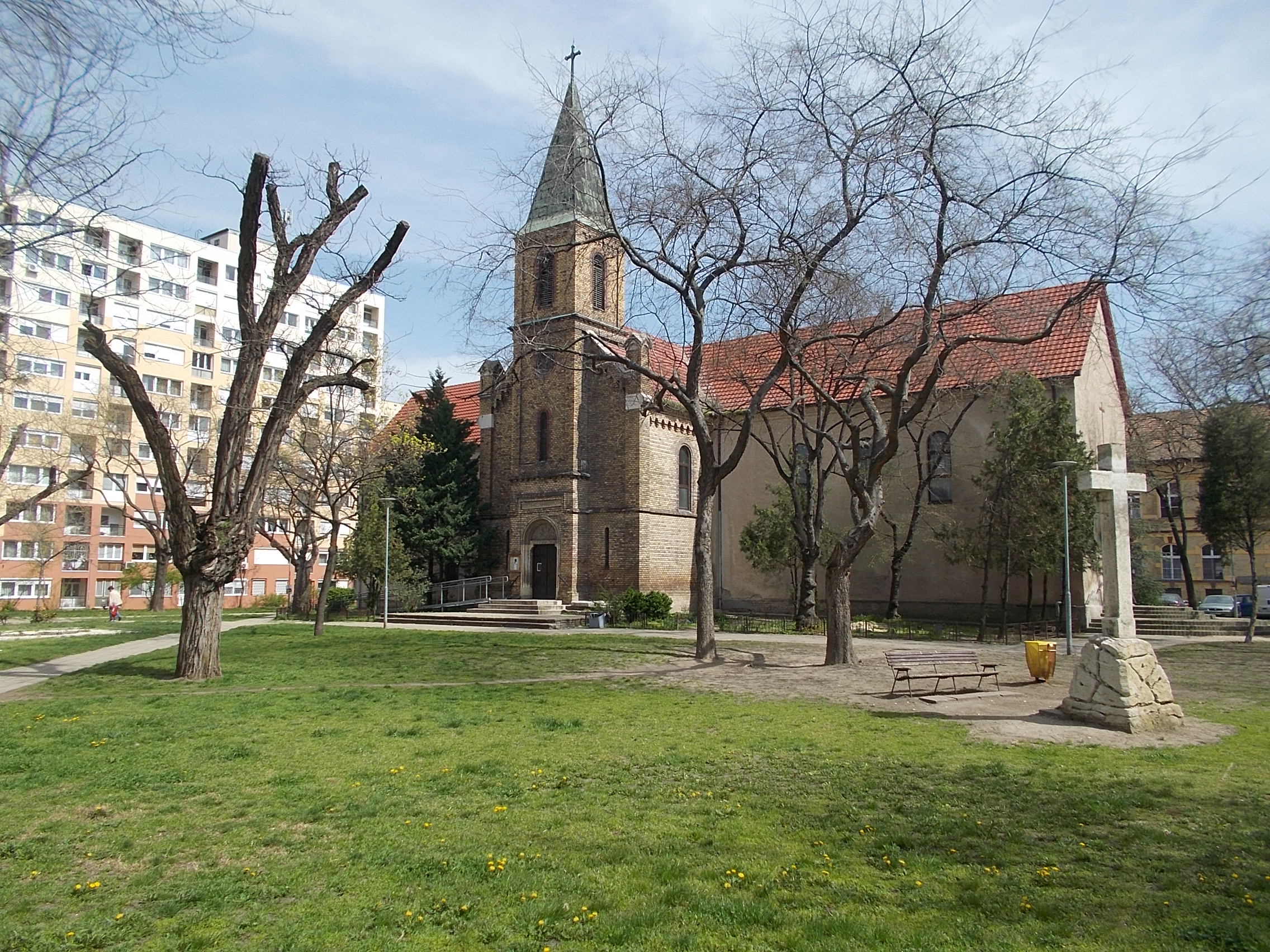
The Parish Church of Saint Stephen and a stone cross in front of it (Photo: Wikipedia)
The parish church was built in the Romanesque-revivals style following the plans of József Pucher. The bell in its tower was cast in 1871 by Ferenc Walser and was used in the wooden church built temporarily before the brick building.
The stone cross in front of the church was carved in 1857 and is the oldest religious public monument in Zugló.
Rákosfalva is defined by the Rákos Stream and major roads: Örs Vezér Square – Füredi Road – Kerepesi Road – and Rákos Stream.
Cover photo: The Zugló cityscape (Photo: zuglo.hu)

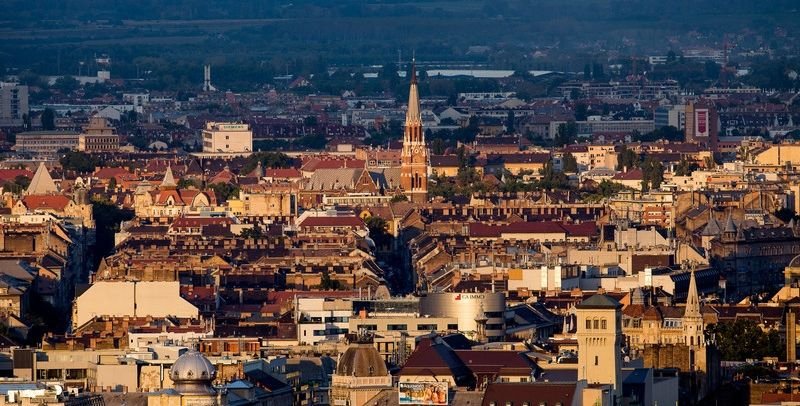


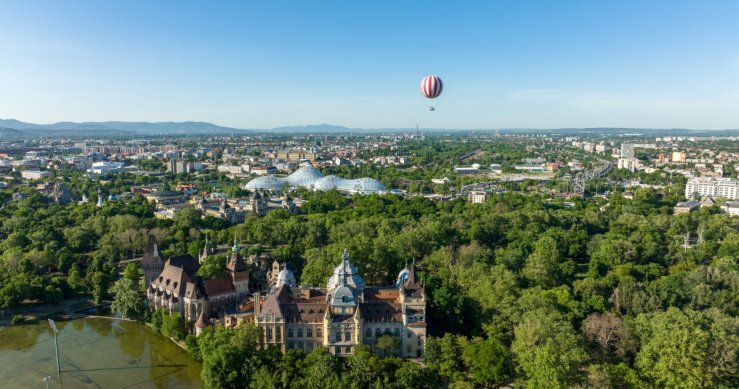

































Hozzászólások
Log in or register to comment!
Login Registration